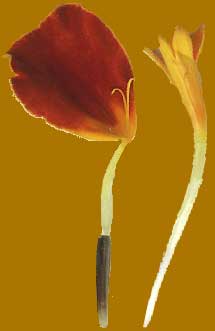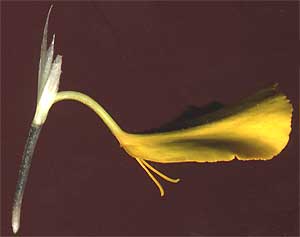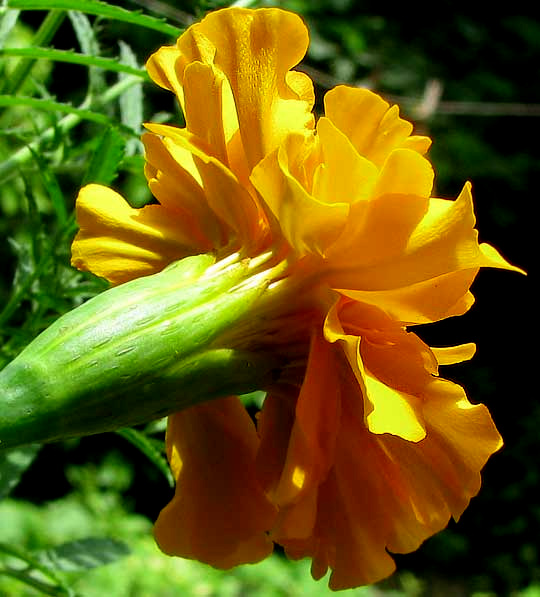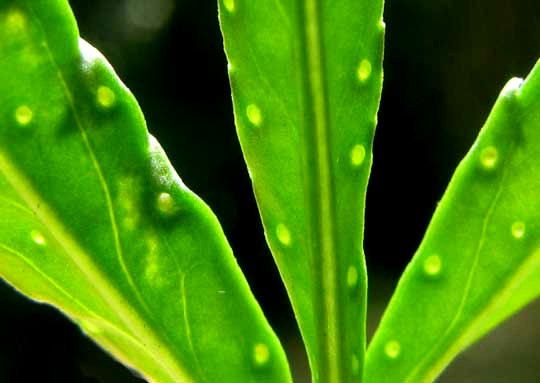

Marigolds are scented herbs of the genus Tagetes, and the ones in our gardens are mostly originally from Mexico, where they are known as caléndulas. Over 40 wild marigold species are recognized, all native to the Americas -- four in North America -- with Mexico especially rich. Only four Tagetes species are commonly cultivated, but untold numbers of cultivars have been developed by horticulturists. The one pictured above is a "French Marigold" (from Mexico), Tagetes patula.

Since marigolds are members of the huge Composite or Aster Family, the pair of blossoms appearing above are actually flowering heads consisting of clusters of many florets. Each floret consist of a corolla and all the required sexual parts to make it a "real flower." This very distinctive arrangement of flowering parts in the Composite Family is described on our Composite Family page. At the left you see a marigold flowering head split in half, showing its numerous tightly clustered florets.

Unlike many Composite Family members, marigold flowering heads contain two floret types. In the above photo, the slender, white-bottomed but yellow topped, columnar structures in the head's center are disc florets. On the left side of the head, the floret at the very margin, instead of being cylindrical and topped by 5 lobes like the disc florets in the head center, bears a corolla that is flat and blade-like. It's a ray floret. At the right, a French Marigold's orange-brown ray floret appears on the left, and the yellow disc floret is on the right.
Also in the picture at the right, notice at the base of the flat blade of the orange-brown ray floret the slender, yellow, Y-shaped style branches bearing {unseen} stigmatic surfaces where pollen grains germinate. At the bottom of the ray floret resides its dark, mature, one-seeded, cypsela-type fruit. The disc floret in the picture's right side also has a cypsela but it is immature, and will enlarge and darken later.

Another distinguishing feature of marigold flowers is shown at the left. The top of the cypsela-type fruit bears a pappus consisting of 3-10 unequal scales or bristles. The pappuses of some composites are stiff spines, or soft bristles, or low crowns, or nothing at all. These 3-10 unequal scales or bristles are important to notice if you want to be sure you really have a marigold.

Yet another peculiarity of marigold flowers is displayed by the green involucre at the bottom of the Aztec Marigold, Tagetes erecta, at the right. In most composite flowering heads, the involucre's individual phyllaries -- the scale-like bracts forming the involucre -- overlap, thus are not connected to one another at their margins. Here you see that the phyllaries are indeed connected, forming a kind of cup. Also, you can barely see in the picture at the right that each green phyllary bears several slender, long, scar-like features.

Those are oil glands producing very pungent oils containing chemicals that impart a strong odor to crushed marigold herbage. The same potent chemicals establish marigolds as important traditional medicinal herbs, plus marigolds are known to repel certain garden pests. The glands show up better on the marigold leaflets shown at the left.